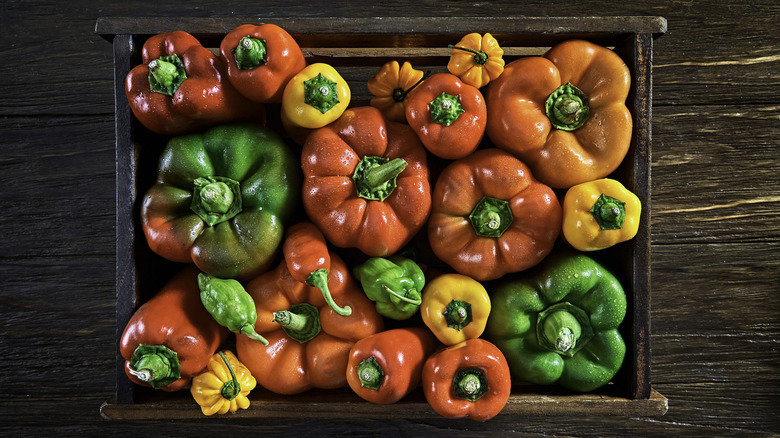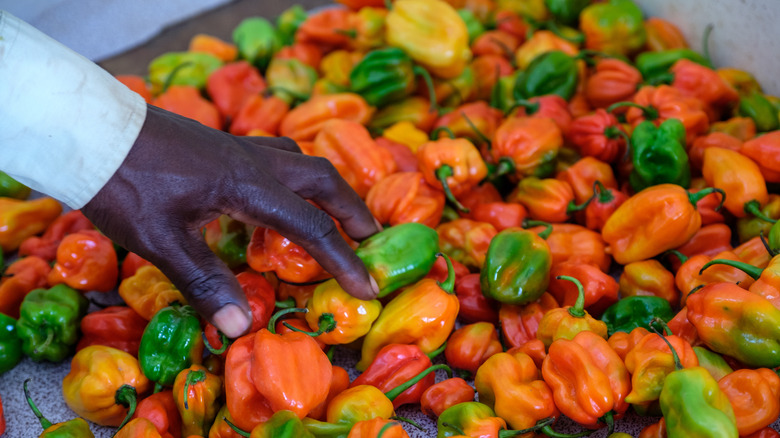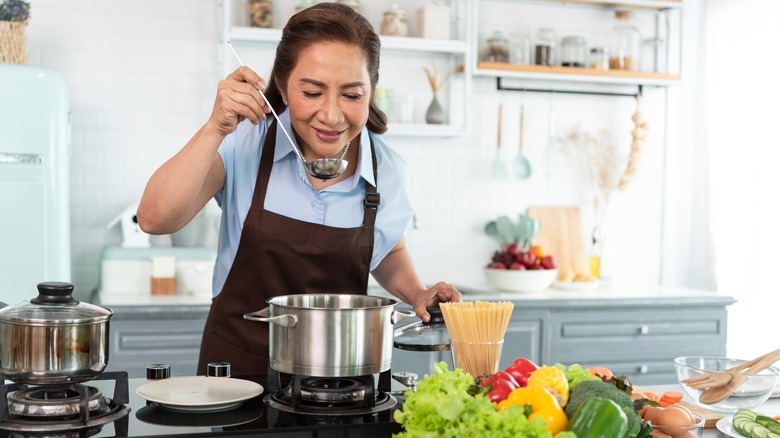Can You Still Eat Super Wrinkly Peppers?
We've all been there: The ambitious version of you does the grocery shopping and buys a plethora of fresh vegetables, envisioning a week full of salads, crudites, and all-around delicious home-cooked eating. But you put the bountiful haul away and inevitably forget a pepper or two in some secluded corner for a week or so — until you're forced to make a difficult — and often contentious — decision. Do you eat the wrinkly pepper, or toss it out and vow to eat the next ones faster?
While many people are nervous about the safety of eating certain foods when they start to show signs of age, vegetables, like peppers in particular, are great at communicating when they're no longer edible. Even when they become wrinkly or otherwise lose their good posture, drooping somewhat as the weeks go on, they're still perfectly safe to eat until they become slimy, moldy, or develop soft spots. You'll just have to get a bit more creative about how you use them.
How long are peppers good for?
The general wisdom is that most whole peppers are good for up to two weeks, with green bell peppers having the longest standard shelf life. Smaller peppers typically start to peter out after about one week — though the smaller the pepper, the sooner you can expect it to wrinkle. Sliced peppers go bad even faster, only lasting a few days before they start to develop slime and an off smell — clear indications you should no longer eat them.
The first sign that your peppers are dwindling, however, is usually a slight wrinkling of the skin. It doesn't mean that they've gone bad, but they're beginning to lose their moisture and their overall texture is beginning to decline as a result. Don't toss them out just yet, but do put them at the top of your To-Use list and get creative in reimagining your meal plan for the week. Crudite is no longer in the cards for these shriveled-up bad boys, but there are still plenty of delicious alternate options for you to consider. In the future, you can delay this process as long as possible by storing your peppers in a low-circulation area of the fridge, like the vegetable bin set to low-humidity.
Putting your past-prime produce to good use
They may look sad, but even a wrinkly pepper is full of flavor and nutrients — a red bell pepper has three times more vitamin C than an orange, and other types pack a considerable punch, too. Rather than struggling to dip a limp pepper slice into hummus or ranch, try cooking them into something delicious instead! Roasting, sauteeing, or otherwise cooking your bell peppers will breathe new life into them.
If you're struggling to imagine how the wrinkled pepper in your fridge could become appetizing again, here are a few tasty suggestions for how you can use up peppers before they need to be tossed. First things first: Past-prime veggies were made for soups. Toss them into a slow cooker chili or pot of vegetable stew that uses up any other vegetable scraps you've got on hand. You can also add them to a bag of frozen veggies for an easy and delicious stirfry, or stuff them with rice and ground beef for a fabulous stuffed pepper. Another scrummy option is to lean into their skin's imperfections and make roasted bell peppers, letting them bake in a hot oven until they're soft, charred, and covered in blisters. Old scotch bonnets? No problem! Roast them to bring out the sweetness in your homemade hot sauce. No matter which route you take, if stored in an airtight container, you'll have another three to four days to finish your peppers.



